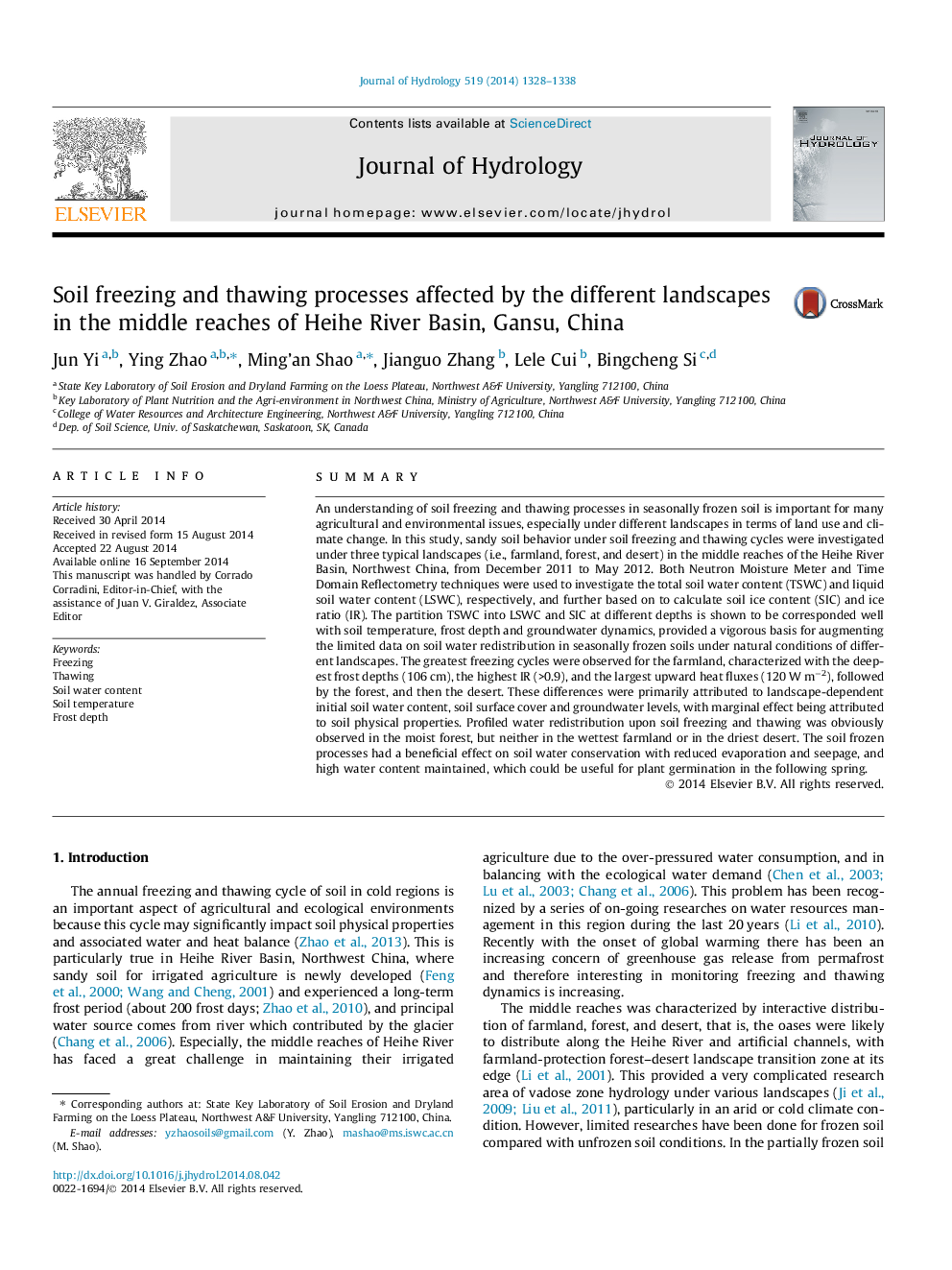| کد مقاله | کد نشریه | سال انتشار | مقاله انگلیسی | نسخه تمام متن |
|---|---|---|---|---|
| 6411909 | 1332896 | 2014 | 11 صفحه PDF | دانلود رایگان |

- Combined NMM and TDR techniques is practical to calculate soil ice content.
- The calculated soil ice content is corresponded well with other monitoring variables.
- The freezing cycles were the greatest for farmland, followed by forest and desert.
- Soil frozen processes benefit on soil water conservation for all landscapes.
SummaryAn understanding of soil freezing and thawing processes in seasonally frozen soil is important for many agricultural and environmental issues, especially under different landscapes in terms of land use and climate change. In this study, sandy soil behavior under soil freezing and thawing cycles were investigated under three typical landscapes (i.e., farmland, forest, and desert) in the middle reaches of the Heihe River Basin, Northwest China, from December 2011 to May 2012. Both Neutron Moisture Meter and Time Domain Reflectometry techniques were used to investigate the total soil water content (TSWC) and liquid soil water content (LSWC), respectively, and further based on to calculate soil ice content (SIC) and ice ratio (IR). The partition TSWC into LSWC and SIC at different depths is shown to be corresponded well with soil temperature, frost depth and groundwater dynamics, provided a vigorous basis for augmenting the limited data on soil water redistribution in seasonally frozen soils under natural conditions of different landscapes. The greatest freezing cycles were observed for the farmland, characterized with the deepest frost depths (106Â cm), the highest IR (>0.9), and the largest upward heat fluxes (120Â WÂ mâ2), followed by the forest, and then the desert. These differences were primarily attributed to landscape-dependent initial soil water content, soil surface cover and groundwater levels, with marginal effect being attributed to soil physical properties. Profiled water redistribution upon soil freezing and thawing was obviously observed in the moist forest, but neither in the wettest farmland or in the driest desert. The soil frozen processes had a beneficial effect on soil water conservation with reduced evaporation and seepage, and high water content maintained, which could be useful for plant germination in the following spring.
Journal: Journal of Hydrology - Volume 519, Part B, 27 November 2014, Pages 1328-1338